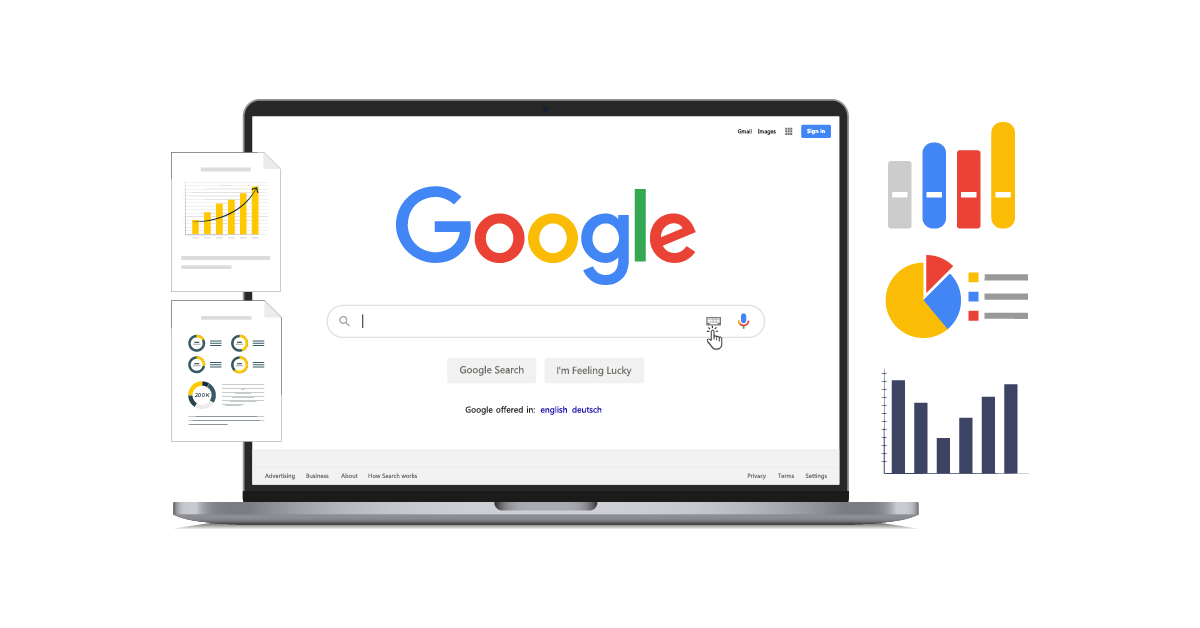5 min read

SEM, or search engine marketing, has emerged as a key component for companies looking to increase their online presence and conversion rates in the ever-changing field of digital marketing. To maximize the effectiveness of your PPC campaigns, you must become proficient in SEM with regard to advanced techniques like dynamic ads and remarketing. In this blog post, we will look at how SEM marketing, e-commerce PPC management, and pay-per-click marketing agency services come together, showing you how remarketing and dynamic ads can be effective success accelerators.
Table of Contents
A Dynamic Remarketing Advertisement: What is it?
An advertisement that automatically modifies its size, appearance, format, and message to fit available ad spaces outside of our platforms is known as a dynamic or responsive remarketing ad.
Adaptable to nearly any ad space, dynamic remarketing advertisements can feature any of the following components:
- short headline
- long headline
- description
- marketing images
- logo
Short Headline
When there are limited ad spaces, the short headline appears as the first line of your advertisement and takes precedence over the long one. Short headlines may appear with or without your description.
Compose two, three, or five brief headlines at minimum. Enough characters, no more than thirty, are required. Another character that counts is a space.
Long Headline
Larger advertisements use the long headline as the first line rather than the short one. Either your description or no description at all may appear in long headlines. The length of a long headline in an advertisement will vary based on the website it appears on. If the lengthy headline is condensed, it will conclude with ellipses.
We need one lengthy headline, no more than ninety characters. A space is also considered a character in this case.
Description
The description text encourages readers to take action and appears in addition to the headline. It may follow the headline, which could be short or long and contain up to 90 characters. It should be noted that the length of the rendered description varies depending on the website it appears on. Should it be condensed, ellipses will be used to close the description. To achieve optimal results, use a maximum of five descriptions.
Marketing Images
It is advised to use multiple marketing images because this facilitates the process of the algorithm optimizing your ads (i.e., determining which image pairs best with which text). You may use up to fifteen promotional photos.
Panorama. The recommended resolution for the landscape image is larger than 600×314 pixels (1200×628 pixels) and should have a ratio of 1.91:1. There is a 5MB file size limit.
Acre. At least 300×300 pixels (1200×1200 pixels is recommended) should be included in the square (1:1) image. Five megabytes is the maximum file size.
Aim to keep text out of the pictures.
Logo
To ensure optimal rendering, two logo images should be supplied:
Square (1:1), 1200×1200 pixels is the recommended size (with 128×128 pixels as the minimum).
The landscape (4:1) logo needs to be at least 512 by 128 pixels or larger. The landscape logo should be 1200 x 300 pixels in size.
Remember that for all logos, a transparent background works best—but only if the logo is centered.
The Fundamentals of SEM Marketing

Let us review the fundamentals of SEM marketing before moving on to more sophisticated strategies. SEM includes a number of techniques for using paid advertising to raise a website’s exposure on search engine results pages (SERPs). One of the main elements of search engine marketing (SEM) is pay-per-click (PPC) advertising, which enables companies to bid on keywords and show ads to people who are actively looking for goods or services.
Dynamic Advertisements: A Revolution in Customization
When it comes to PPC advertising services, dynamic ads are a revolutionary development. Designed specifically for PPC management in e-commerce, dynamic ads automatically modify the content according to user preferences and behavior. The power of dynamic ads can be imagined as products that are dynamically selected from your inventory and displayed to users who have previously expressed interest.
Important Characteristics of Dynamic Advertising:
Integrating the Product Catalog:
Integrate dynamic ads seamlessly with your product catalog to receive real-time updates on descriptions, prices, and availability. This guarantees that the most recent and pertinent information is always shown to users.
Behavioral Targeting in E-commerce:
Make the most of user behavior to improve your e-commerce PPC management. By providing a customized shopping experience and raising the chance of conversion, dynamic ads can effectively target users who have looked at particular products.
Opportunities for Cross-Selling and Upselling:
By using cross-selling and upselling techniques, you can find new sources of income. By showcasing related goods or upgrades, dynamic ads can encourage users to explore further and, in the end, raise the value of their orders.
Advanced Strategies for Remarketing:
A pay-per-click marketing company with experience in e-commerce PPC management is aware of how important remarketing is to increasing conversions. Remarketing strategies that are advanced go beyond the fundamentals and provide a more sophisticated way to bring users back into contact with your website.
Making the Most of Keywords for Effective Remarketing:
- Segmentation as Well as Customized Audiences:
Use your pay-per-click marketing agency’s experience to divide your audience into groups according to keywords, demographics, or actions. This makes it possible to develop extremely focused remarketing campaigns that appeal to particular user interests.
- Dynamic Re-Marketing for Keyword Precision:
Combine the effectiveness of remarketing with dynamic ads by using precise keyword research. To ensure a more relevant and individualized advertising experience, showcase products dynamically based on the keywords that brought users to your website in the first place.
- Sequential Remarketing to Sequentially Sequence Keywords:
Create a story with sequential remarketing by using keywords to lead users through an intelligently designed series of advertisements. Users may become more engaged and be encouraged to move through the conversion funnel as a result.
PPC Remarketing’s Advantages
Remarketing is an excellent method of advertising your products to individuals who are already aware of them. Many people visit you for the first time and then, for a variety of reasons, decide not to convert.
Customers behave in this way; among the numerous explanations for their actions, they might need more time to browse, or they might have simply skipped your website.
Remarketing becomes that kind of reminder to consumers that you are still around and that you can solve their problem as it becomes more visible. Promoting yourself through familiarity, or being “top of mind,” is a useful psychological tool.
Remarketing’s ability to boost conversions by up to 70% is another factor in its effectiveness. You should expect only 2% of website visitors to become customers. You can convert the remaining 98% of people with remarketing.
This reverts to the tried-and-true method of lathering, rinsing, and repeating while barraged with your imagery.
Conclusion:
The dynamic field of search engine marketing necessitates a strategic fusion of precision and innovation for e-commerce PPC management. A skilled pay-per-click marketing agency can take your campaigns to new heights with the help of dynamic ads and advanced remarketing techniques. Through the strategic integration of keywords and an appreciation for the ever-changing nature of user behavior, businesses can effectively garner attention, meaningful engagement, and conversions. Make the most of remarketing and dynamic ads to keep your SEM marketing efforts ahead of the competition.
Published: December 4th, 2023








